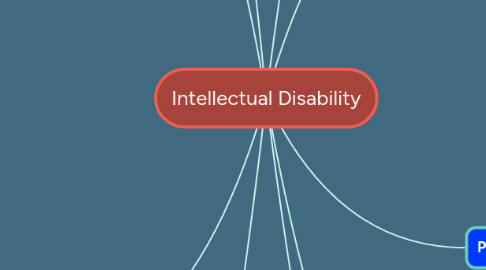
1. Epidermilogy
1.1. 10 to 15 offspring in developing countries.
1.2. M:F 1.5:1
2. Associated Comorbidities
2.1. Communication disorder
2.2. Learning disabilities
2.3. Cerebral palsy
2.4. Epilepsy
2.5. Genetically transmitted condition
2.6. Mental disorder
2.7. Low self-esteem and negative self-image
3. Interview and Examination
3.1. History Taking
3.1.1. Fulfilled diagnostic criteria based on DSM-5
3.1.1.1. Patient' sensory, social, language and motor development based on age
3.1.1.2. Patient's academic performance at school
3.1.1.3. Patient's behavior disturbance reported at school
3.1.2. Underlying possible factors
3.1.2.1. Patient's medical condition and drug history
3.1.2.2. Information about the mother pregnancy, labour and delivery
3.1.2.3. Information regarding patient's exposure to infection, trauma and toxin
3.1.2.4. Patient's family history of psychiatric and medical conditions
3.1.2.5. Patient's living situation, caretaker
3.2. Mental State Examination
3.2.1. Speech
3.2.2. Mood and affect
3.2.3. Abstract thinking
3.2.4. Vocabulary
3.2.5. Attention and concentration (ADHD)
3.2.6. Judgement
3.3. Psychological Assessment
3.3.1. Cover areas of cognitive function across multiple domains including verbal, memory and problem solving based on various age
3.3.1.1. Weschler Intelligence Test for Children ( 6 to 16 years old)
3.3.1.2. Weschler Preschool and Primary Scale of Intelligence-Revised (3 to 6 years old)
3.3.1.3. Standford-Binet Intelligence Scale, Fourth Edition ( 2 years old onward)
3.3.1.4. Kaufman Assessment Battery for Children (2 and half to 12 and half years old)
3.3.1.5. Vineland Adaptive Behavior Scales ( Infants to 18 years old)
3.4. Physical Examination
3.4.1. Full Neurological Examination
3.4.1.1. Visual and Hearing Assessment
3.4.1.2. Muscle tone, reflexes, involuntary movement and coordination
3.4.2. Specific characteristic
3.4.2.1. Down Syndrome
3.4.2.2. Fragile X syndrome
3.4.2.3. Fetal alcohol syndrome
3.4.2.4. Prader-Willi Syndrome
3.4.2.5. Phenylketonuria
4. Differential Diagnosis
4.1. Autism spectrum disorder
4.2. Cerebral Palsy
4.3. Seizure Disorder
4.4. Sensory Disability (Deafness and Blindness)
4.5. Speech Disorder
4.6. Child Abuse
5. Diagnosis Criteria based on DSM-5
5.1. Deficit in intellectual functioning
5.2. Deficit in adaptive function
5.2.1. Severity
5.2.1.1. Mild
5.2.1.2. Moderate
5.2.1.3. Severe
5.2.1.4. Profound
5.3. The onset of these deficits during childhood
6. Definition of Intellectual Disability
6.1. "neurodevelopmental deficits characterized by limitation in intellectual functioning (reasoning, learning and problem solving) and adaptive behavior (conceptual, social and practical skills). These abilities originate and manifest before the age of 18 and diagnosis is made independent of coexisting physical or mental disorders.
6.1.1. Definition (American Association on Intellectual Developmental Disabilities, AAIDD)
7. Pathophysiology (Etiology)
7.1. Biological
7.1.1. Contributing most of the disabilities
7.1.2. Genetic Factor (Down syndrome and Fragile X syndrome)
7.1.3. Maternal Condition (Infection or uncontrolled illness during pregnancy)
7.1.4. Nutrition and Metabolic cause (Phenylketonuria)
7.1.5. Complications during delivery (Asphyxia or anoxia)
7.1.6. Gross Brain Disease (Brain tumour)
7.2. Social-Environmental
7.2.1. Significant nutrition and nurturance deprivation
7.2.2. Exposure to toxin or chemical agents (Fetal alcohol syndrome)
7.2.3. Brain Radiation or Traumatic Brain Injury
7.2.4. Childhood infection (meningitis and encephalitis)
7.2.5. Child neglect and inadequate caretaking
